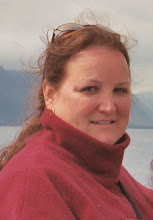At breakfast, I learned that 11 of the 25 teachers had taken ill during the night: headache, stomach flu (the runs), and vomit. Our guides provided a special electrolyte drink and gave advice on what to eat and not eat to hasten their recovery. Some, after spending a very long night, were weak, but OK to take part in the morning lecture at Monteverde Institute. However, most opted out of the service learning project that followed. Our guides determined that it was not food or water that had caused the illness since we all ate at the same places and many were not ill. The culprit, they think, is likely a rotavirus, common in groups of people that travel together, often on cruise ships. My anti-bacterial hand gel and wipes, used throughout the trip, have come in handy! I’m crossing my fingers that this will pass without affecting me.



service projects
Our talk at the Monteverde Institute focused on sustainability efforts the community has undertaken and local water resource issues. The Monteverde Cloud Forest watershed is 35 km long, furnishes water to 18 communities, has 5 headwater streams and 3 main tributaries. Visible problems include grey water (as in sink and washing machine discharge), black water (septic systems), solid waste, agricultural run-off, and erosion. On top of that, eco-tourism has created the need for a large service industry in this very small population community, leading to an influx of people who have come to work at the large hotels, that have also been built to service the growing tourism industry. There is no municipal infrastructure (i.e., sewer lines) and large hotels have their own treatment systems (!). Most places request that toilet paper not be flushed. We are instructed to use the bathroom waste paper receptacles for TP, so that the flush contains only organic waste. So, you can understand the concern the community people have about preserving their environment, their watershed, yet maintaining a healthy balance with the largest part of their economy, tourism. One of the speakers today spoke about how some farmers, who sold their land for tourism growth 20 years ago are now questioning whether they made the right decision. Many now believe that tourism should not be the only economic resource in t heir community and that they should grow their own food, like they used to just 20-30 years ago, instead of shopping for food at the grocery store. The community is very young in the sense of organization, but it seems to have a lot of the pieces needed to help move forward. They are now officially a municipality, have several community development and conservation boards. They are lacking zoning codes and homes are being built on small lots or close to waterways.


Service Learning: the teacher group, though 8 or so fewer due to illness, was divided into three project groups. One group cleared a pathway, leveled it, and built a small walkway bridge. Though it was true hard labor, they felt really good about their accomplishment. Another group went to a tree plantation and helped move seedlings and fill bags with dirt for other seedlings. The third group, including yours truly, headed to the local stream for a water analysis activity. We measured turbidity, stream flow, temperature, pH, and collected macro-invertebrate samples that were brought back to the Institute for identification and data analysis. I hadn’t done any water testing since about 1995 when I used to bring classes to the St. David cross area and the Frenchville town line (above and below Fraser). Today was a good kick-in-the-butt reminder that our students need to be re-introduced to this activity and taught about the value of our natural resources in northern Maine.












































